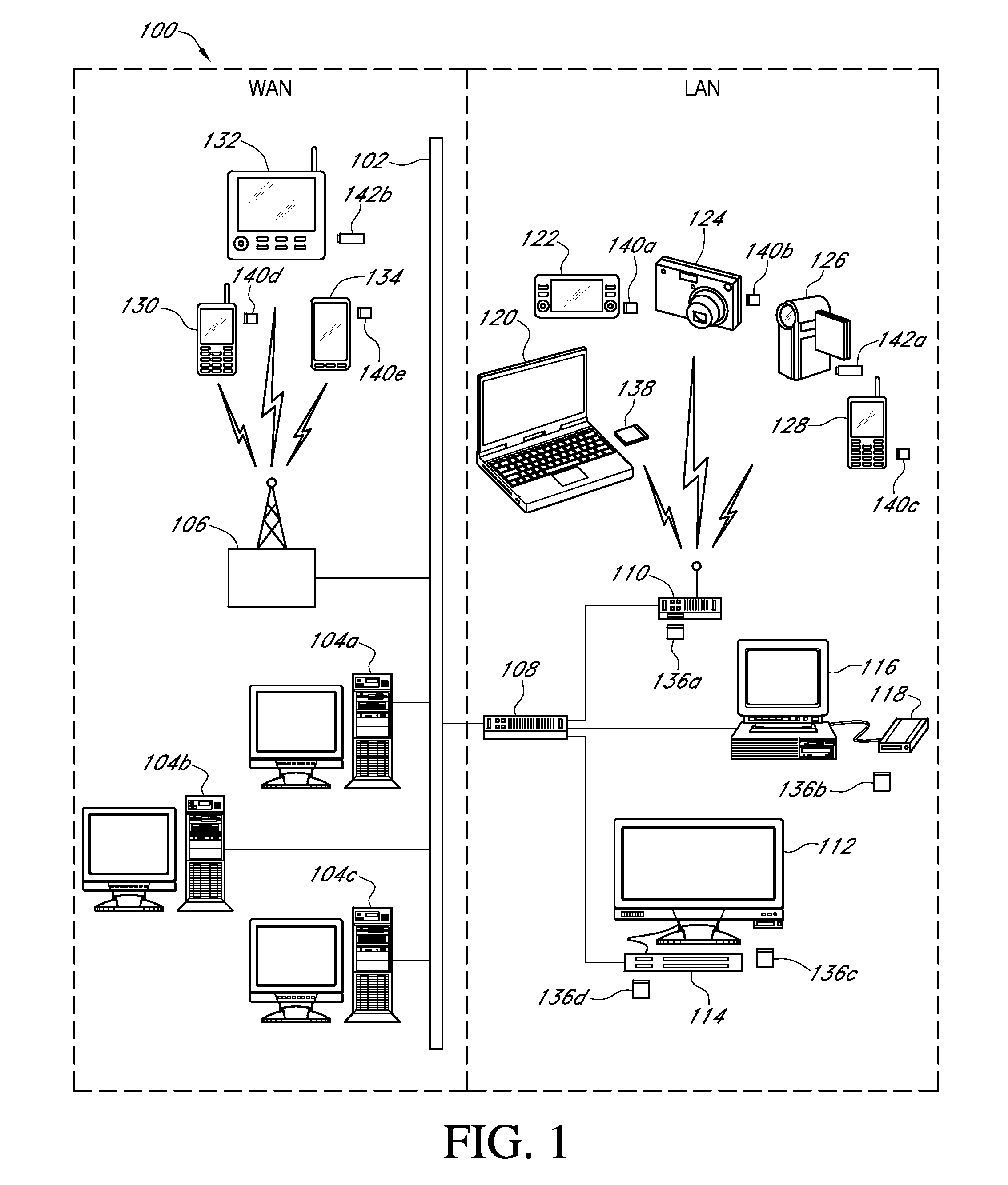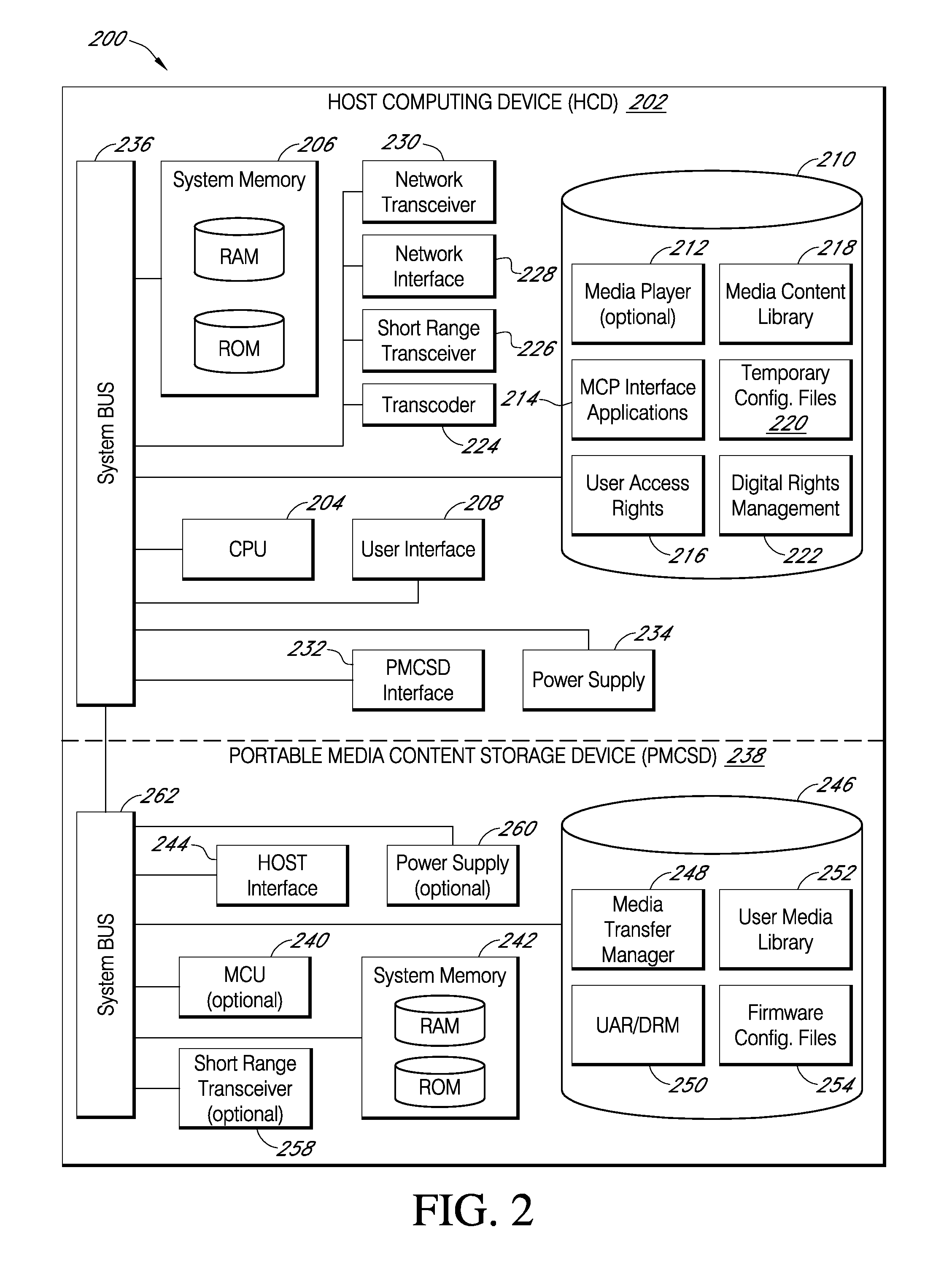Systems and methods for portable data storage devices that automatically initiate data transfers utilizing host devices
a technology of host devices and data storage devices, applied in the direction of data switching networks, digital transmission, instruments, etc., can solve the problems of large potential consumers, large network limitations, and large population of potential consumers, and achieve the effect of reducing network limitations, reducing network capacity, and increasing network capacity
- Summary
- Abstract
- Description
- Claims
- Application Information
AI Technical Summary
Benefits of technology
Problems solved by technology
Method used
Image
Examples
Embodiment Construction
[0045]In accordance with an exemplary embodiment of the present invention, FIG. 1 illustrates a networked computing system 100 including various wireline and wireless computing devices that may be utilized to implement any of the digital media content procurement and distribution processes associated with various embodiments of the present invention. The networked computing system 100 may include, but is not limited to, a group of remote server devices 104a-c, any one of which may be associated with various Media Content Providers (MCPs) that can provide digital media content distribution services to various networked clientele devices; a data communications network 102 (including both Wide Area Network (WAN) and Local Area Network (LAN) portions); a variety of remote wireless communications devices, including a cellular phone 130, an electronic book device 132, and a PDA device 134, that may be connected to the data communications network 102 utilizing one or more wireless basestat...
PUM
 Login to View More
Login to View More Abstract
Description
Claims
Application Information
 Login to View More
Login to View More - R&D
- Intellectual Property
- Life Sciences
- Materials
- Tech Scout
- Unparalleled Data Quality
- Higher Quality Content
- 60% Fewer Hallucinations
Browse by: Latest US Patents, China's latest patents, Technical Efficacy Thesaurus, Application Domain, Technology Topic, Popular Technical Reports.
© 2025 PatSnap. All rights reserved.Legal|Privacy policy|Modern Slavery Act Transparency Statement|Sitemap|About US| Contact US: help@patsnap.com



